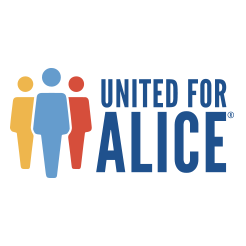In 2022, 44% (107,967) of Maine’s children lived in households that couldn’t afford the basics, according to new data from United Ways of Maine and its research partner United For ALICE. This ranks Maine in the middle of the pack at 19th best in the nation.
ALICE in Focus: Children reveals that traditional measures of poverty have severely undercounted the number of children ages 18 and younger in Maine who are growing up in financially insecure households. While 10% (25,027) of all children in the state lived in poverty in 2022, the new data shows that 34% (82,940) – more than three times as many – lived in families defined as ALICE® (Asset Limited, Income Constrained, Employed). ALICE households earn more than the Federal Poverty Level, but less than the basic costs of housing, child care, food, transportation, health care and technology, plus taxes.
“Undercounting the number of children living in hardship in our state not only masks the true scale of the issue but also hinders our ability to provide the necessary support and resources,” said Dan Coyne, Chief Impact and Governance Officer, United Way of Southern Maine. “Without these, our children are at risk of falling behind in school, facing health issues, and missing out on opportunities to thrive as they grow.”
Because ALICE households often earn too much to qualify for public assistance, the data finds that in 2022, more than 71,300 children in struggling families didn’t access the Supplemental Nutrition Assistance Program (SNAP).
ALICE in Focus: Children also reveals that in 2022:
- Hardship varied widely across the state, ranging from 59% of children in Androscoggin County to 26% of children in parts of Cumberland and York Counties.
- Racial disparities persisted, with 62% of Black and 59% of Hispanic children in Maine living in households below the ALICE Threshold, compared with 43% of white children.
- 73% of children living with one adult are living in households below the ALICE Threshold; having two working parents didn’t guarantee financial stability: Among all Maine households with two working adults, 32% of children were still growing up in hardship.
- Nearly 18,400 children in households earning below the ALICE Threshold had no high-speed internet access at home.
“To unlock a brighter future for every child, we’ve got to aim higher than the poverty level,” said United For ALICE National Director Stephanie Hoopes, Ph.D. “Together we are working to make the ALICE Threshold the minimum standard for child well-being.”
More state and local data is available through the interactive ALICE in Focus: Children Data Dashboard – which provides filters for regional and local geographies, age, race, disability status, living arrangements and household work status. Visit UnitedForALICE.org/Focus-Children.
ALICE in Focus: Children is part of the ALICE in Focus Research Series, which draws from the U.S. Census Bureau’s American Community Survey (ACS) Public Use Microdata Sample (PUMS). Each installment in the series highlights a specific population within the ALICE demographic. Topics include people with disabilities and veterans.
The ALICE Report for Maine was funded by the John T. Gorman Foundation.
About United Ways of Maine
United Ways of Maine’s mission is to improve lives and create lasting positive change across Maine, by supporting a strong network of local United Ways. There are seven United Ways of Maine (UWME), each independently incorporated, and each governed by local volunteers. UWME partners with individuals, schools, nonprofit organizations, government policymakers, businesses, financial institutions, voluntary neighborhood associations, community development corporations, and the faith community. We have a keen appreciation for the uniqueness of each community in Maine and do not waver in our respect for the local nature and independent governance of each United Way. For more information, visit: unitedwaysofmaine.org.
About United For ALICE
United For ALICE is a U.S. research organization driving innovation, research and action to improve life across the country for ALICE® (Asset Limited, Income Constrained, Employed) and for all. Through the development of the ALICE measurements, a comprehensive, unbiased picture of financial hardship has emerged. Harnessing this data and research on the mismatch between low-paying jobs and the cost of survival, ALICE partners convene, advocate and collaborate on solutions that promote financial stability at local, state and national levels. This grassroots ALICE movement, led by United Way of Northern New Jersey, has spread to 34 states and the District of Columbia and includes United Ways, corporations, nonprofits and foundations in Alabama, Arkansas, Colorado, Connecticut, Delaware, Florida, Georgia, Hawai‘i, Idaho, Illinois, Indiana, Iowa, Kansas, Louisiana, Maine, Maryland, Michigan, Minnesota, Mississippi, New Jersey, New Mexico, New York, North Carolina, Ohio, Oklahoma, Oregon, Pennsylvania, South Carolina, Tennessee, Texas, Virginia, Washington, Washington, D.C., West Virginia and Wisconsin; we are United For ALICE. For more information, visit: UnitedForALICE.org.
